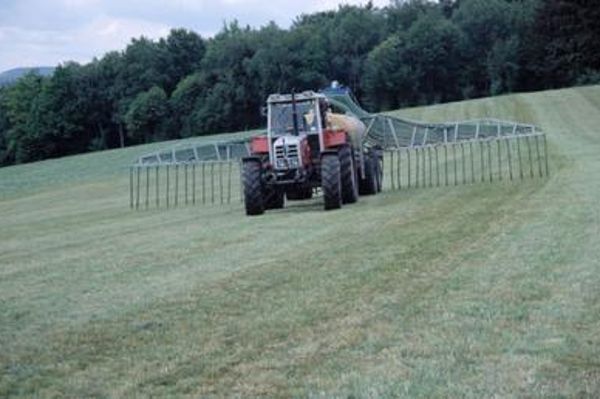Nitrate Action Programme Ordinance

Measures aiming at the prevention and/or reduction of the nitrate input in the field of agriculture.
Council Directive no 91/676/EEC concerning the protection of waters against pollution caused by nitrates from agricultural sources obliges Member States to define Action Programmes in order to reduce such a kind of water pollution and to prevent further cases of water pollution of this kind.
The Austrian Action Programme set forth in the Nitrate Action Programme Ordinance includes requirements concerning the application of nitrogenous fertilisers on agricultural areas. It comprises:
- Time restrictions on the application of fertiliser (prohibition periods)
- Quantitative restrictions (on the use of farmyard manure and upper limits for the quantity of fertiliser that may be applied per crop)
- Local restrictions (e.g. in the vicinity of waters)
- Provisions on the way of application
- Requirements on the capacity of manure storage facilities
- Farm-related recording obligations in connection with the application of fertilisers
Directive 91/676/EEC provides that the effectiveness of action programmes has to be reviewed at regular intervals. The most recent evaluation showed that the Nitrate Action Programme Ordinance needs to be refined in the following areas:
Amendments concerning regulations of the Nitrate Action Programme with area-wide application:
- Increased consideration of the effect of catch crops, legumes and harvest residues as forecrops, as well as of the N content in irrigation water, when calculating fertiliser quantities
- Revision of the upper limits on fertiliser use for vegetable crops based on the guidelines for proper fertilisation, with consideration of the Nmin contents (with exceptions for small plots) and setting of upper limits on fertiliser quantities for wine
- Obligation to demonstrate the plausibility of yields for farms subject to recording obligations after the achievement of high yields due to fertilisation by means of weighing records (harvesting quantities) and/or yield determination by means of the cubic content (of silos) (except grassland and arable forage areas)
- Ban on the application of fertiliser on arable land in autumn after harvesting of the main crop, with the exception of winter rape, winter barley and catch crops
- Specification of the storage of farmyard manure on technically impermeable surfaces and technically impermeable storage facilities for silage effluents with special regulations
- Alongside water bodies a buffer strip at least 3 metres wide and covered with living plants all over the year is required, with the possibility of conversion once in 5 years
- At least 1.5 % of the holdings that are subject to recording have to be inspected by the water authorities.
Amendments concerning the intensified actions for areas indicated in Annex 5:
- Reduction of the upper limits on fertiliser use by approximately 10 % to 15 percent, limitation of the upper limit for the fertilising of wine at 50 kg N/ha
- Obligation to demonstrate the plausibility of yields for all farms subject to recording obligations by means of weighing records (harvesting quantities) or yield determination using the cubic content of silos (exceptions for grassland, arable forage areas and small plots)
- Determination of the N balance as in the ÖPUL measure “Schlagbezogene Bilanzierung” (plot-related balance provided for in Austria’s Agri-environmental Programme)
- The water authority has to conduct inspections for at least 1.5 % of the holdings.
These amendments apply as from 1 January 2023.